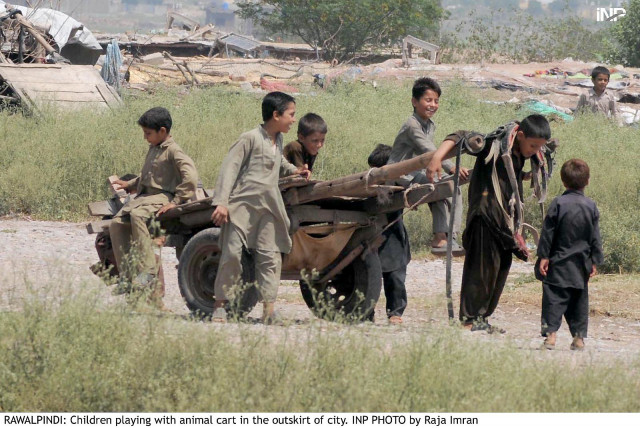K-P witnesses marginal increase in poverty
Three more districts emerge with over 70% population living in poverty

Islamabad’s Planning Commission chief for SDGs said the K-P government need to do more work to achieve SDGs because the graph of poverty index is progressing very slowly as compared to other provinces. PHOTO: INP
This happens in a province that is ruled by the Pakistan Tehreek-e-Insaf which is spearheading a campaign against the ruling PML-N for corruption and ignoring the lot of the masses.
43% Pakistanis remain ‘food insecure’
The MPI uses a broader concept of poverty than income and wealth alone. It reflects the deprivations people experience with respect to health, education and standard of living, and is thus a more detailed way of understanding and alleviating poverty.
Since its development by the OPHI and the UNDP in 2010, many countries, including Pakistan, have adopted this methodology as an official poverty estimate, complementing consumption or income-based poverty figures.

A workshop was held on Tuesday to discuss overall poverty incident in the province.
The workshop was informed that though poverty has decreased in K-P, nearly half of the population still experiencing multidimensional poverty. According to the report, K-P ranks second after Balochistan with the highest proportion of population living in multidimensional poverty.
Facing the hunger tide: The odds are not in our favour
According to the report, poverty in K-P is reducing at a very slow rate as compared to other provinces. Moreover, K-P is the only province where the population living below the poverty line has increased since 2013.
The headcount (the number of people living below the poverty line) in K-P was reduced – from 65.8 per cent in 2004 to 55.5 per cent in 2010-11. However, the rate of decrease got slower to 49.1 per cent in 2012-13.
However, the poverty graph has started to go up again since 2013, and has been measured at 49.2 per cent in 2014-15.
During this period, poverty in Punjab stands at 31.4 per cent, down from 34.7 per cent. In Sindh it stands at 43.1 per cent from 44.6 per cent and for Balochistan, the index has gone down from 71.9 per cent in 2012-13 to 71.2 per cent in 2014-15.
The report also mentioned 12 districts in K-P where the poverty incidence is above 70 per cent when work for achieving the Sustainable Development Goals (SDGs) was started in the country in 2004-05.
In 2012-13, the number of districts where over 70 per cent of the population have been living in multidimensional poverty has decreased to four. The districts are Kohistan, Upper-Dir, Tank and Shangla.
However, in 2014-15 such districts increased to seven – Kohistan, Battagram, Shangla, Upper Dir, Tor Ghar, Buner and Tank.
Islamabad’s Planning Commission chief for SDGs said the K-P government need to do more work to achieve SDGs because the graph of poverty index is progressing very slowly as compared to other provinces.
Published in The Express Tribune, October 6th, 2016.













COMMENTS
Comments are moderated and generally will be posted if they are on-topic and not abusive.
For more information, please see our Comments FAQ